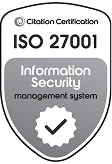“There is only one purpose of a business: to create a customer”
- Peter Drucker
Market Research
It’s obviously a moving target but the latest projections value the global market research sector at about US $74 Billion, to reach $83 Billion by 2023. Massive agencies have grown up around offering a myriad of services related to this task, yet many companies and institutions continue to struggle to find what we might call good product-market fit.
Typical Questions Market Researchers Need to Answer:
- Why would customers buy your offering (or not)?
- Who are they? How many are there?
- What do they think and feel?
- How do they behave?
- Why do they do the things they do?
Market research is understood to be the systemic gathering, listening and learning about the people and economic conditions your organization serves, and then taking action with this knowledge. Over time, with good research habits, the idea has been that companies can become smarter and better tune their offerings to the needs of their market.
I have spent the last several decades designing, setting up and implementing global design research. As this is a form of qualitative research work considered a bit upstream and exploratory, my work generally was in service to innovation efforts and concept development. My team would spend enormous energy time and budgets describing the status quo, and then design or prescribe solutions to change it.
Note that I was leading a strategic innovation consulting firm, which is a very specific and peculiar vantage point within the Market Research world. Now, I am in a new role within The Evolved Group, which, in my perspective, is a disruptive human insights technology company, platform and consulting service. I am seeing things with fresh eyes, I am seeing some tectonic shifts happening, and wonder if others are seeing it too.
The historical way we make sense of research has been Qualitative research (learn a lot of deep insights from a few people) and Quantitative research (learn about and validate a few insights from a lot of people). These approaches have driven the way we have obtained knowledge for a long time. Available data sets have also reinforced this view, as have how we collect and organize data over time. Suffice to say that our ability to parse meaning from our world is still a work in progress, and in fact evolves. New tools and data sets transform our ability to understand our world in new ways. What if, for instance, we can do qualitative research at scale in real time, blending these methods in new ways? That is in fact beginning to happen now.
Suffice to say that our ability to parse meaning from our world is still a work in progress. New tools and data sets are created all the time, transforming our ability to understand our world, our customers and how we can create a better fit with the future we collectively want to make.
It’s Not Magic: It Still Takes Work
Predictive modeling and precognition a la Minority Report aside, we still essentially need to gather data, and organize it into formats we think will be useful as information. We then further look for patterns in the noise and distill this information into insights, developing generalizable knowledge we assume should theoretically apply to larger sets of people.
We are creatures of habit after all, and the hope is that when we understand our customers better, we can tailor/ design offerings and services to better and more efficiently serve particular types of people and ultimately, be more successful. We need to be able to respond to these insights with action, typically in the form of marketing messages, new products, services or organizational changes to optimize something that isn’t quite fit for purpose. And with luck, and a lot of knowledge, we can quite possibly gain some wisdom to understand what implications our actions might have.
Megatrend: Big Data
We have seen some successes with Big Data, but like most things, it has taken a long time to understand how to efficiently make use of such massive amounts of data. AI, or the versions of it we currently have, has enabled some of these improvements using various analysis schemas. There is a lot that goes into the curation, design and careful articulation of analysis methodologies to this torrent of data that makes these successes possible. So far, the nascent flavors of AI we have essentially augmented human efforts, not replaced them (no matter how many words starting with the letter V we want to validate, I have seen as many as 7 to describe Big Data now).
Humans Still in the Driver’s Seat
Humans are especially good at seeing patterns in noise. It’s a big part of why we have survived and thrived in the long haul. The process of deriving insights through analysis, and then making them relevant inside an organization is deceptively difficult. Developing the right insights from the right contexts is hard enough in our complex and fast-changing world. Socializing this in ways that create consensus and give various departments reason to agree on a course of action is an even harder task.
We have always been most successful when we cooperate well across groups, but getting that deep human cooperation gets harder as the complexity of the task increases, such as with digital transformation efforts. Specific groups have specific expertise and assumptions baked into their incentive structures created to protect their own interests - which makes perfect sense. Why would one department take a risk on something another department says may bring more revenue on what is essentially bet on the future? In addition, our problem is too often about managing to augment our native human intelligence with emerging AI and technology in ways that amplify our abilities, not confounding the two.
Data Distillation
Even the best insights based on high quality information from clean data merely informs a group of people to decide what action to take when it becomes accepted as knowledge. Ultimately, it matters how the insights were crafted, how the teams involved understood those insights, and the business managers making the right decisions, eventually with the wisdom gleaned from the past. This deceptively simple model (pictured below) is easy to understand, but quite difficult to implement. All modern institutions have a need to make data useful as it is distilled into information, knowledge and wisdom. This gets harder as you climb the pyramid.
I believe at The Evolved Group, we are building nothing short of a collaborative learning machine to help us better connect with and understand our world.
Enabling Research as a Workflow
At The Evolved Group, we have spent the last 11 years developing a system that enables research activities to become a workflow. We are by no means the only firm enabling this, but it is the one I am most familiar with, and I would consider ourselves to be pioneers in this space. I will use it as an example to highlight some major implications and opportunities I am seeing.
Systems like these are enabling new ways to integrate and disseminate knowledge into an organization. We are building a collaborative learning machine to help us better connect with and understand our world.
Our firm is but one example that illustrates an emergent capability transforming the way research gets done. These types of technology platforms make it possible for research to provide real time information flows or insights on demand. This can be simply “on,” always listening to the world, designed in controlled pulses along certain cadences, or designed for deeper moments of ad hoc research (including other methods in tandem).
Can You Hear Me Now?
The target can obviously be customers, continually driving insights that in-turn drive new product development or create feedback to fix emergent experience issues. Or perhaps the target is turned to be inside companies, to listen to employees, surfacing cultural issues or problematic processes that lead to decreased employee engagement. Imagine your city used citizen-driven insights to design policy or civic services. Systemic listening helps Universities design better student experiences. The list goes on.
So it begins with a Conversational AI-powered chatbot collecting data. It is always on, can manage hundreds of thousands of conversations with people simultaneously, and does not need any coffee or naps to get it done. It learns over time and can resolve issues when they arise (essentially becoming integrated into customer service as well). The chatbot experience can listen and engage with people in their own words, and probe on various topics either within the conversation or programmed by the team. It’s essentially a conversational-based open-ended (or closed ended if you choose) survey.
As we said at the beginning, data comes in many forms. The platform is designed to enable other forms of data to be curated into the system to be analyzed together, using various forms of cutting-edge analytics applied intelligently to the data, such as natural language processing (NLP). This is a process that is designed by data scientists and researchers working together with organizations. This is research design at an unprecedented scale, happening in real time and getting integrated into the operations and functions more than ever before.
Knowledge is Social, Wisdom is Elusive
Once these conversations yield data, it is ingested into the system for analysis and ultimately gets updated into dashboards for consumption, tailored for the needs of each group needing access to information in various ways. For example, the marketing department may need one form of insights to develop campaigns, whereas operations need insights for demand planning and production. Different groups can have access to what they need, without as many layers or silos creating bottlenecks or data traffic jams. Humans are still critically important to set up, monitor, interpret and figure out what these insights mean to the business, and what to do about it.
These are just a few examples of how technology platforms are creating new ways to make the world more permeable, intelligent and integrated with continual feedback. This operationalizing of research is still emerging and novel. We are yet to see the long-term implications of its efficacy, but we believe it will affect corporate structures, organizational culture, and silos to truly enable new linkages within, across and between organizations that haven’t been possible before. And we are very excited to be here, providing a path for this to happen.
Want to know more?
For more information about the Evolved Thinking experience, please message me on LinkedIn or head to our Strategic Market Research page.










